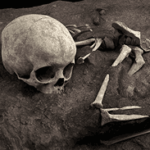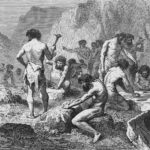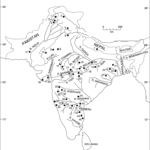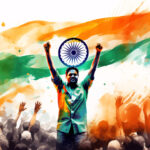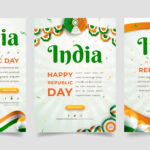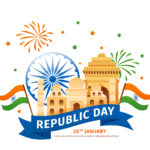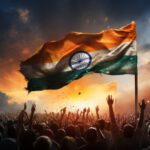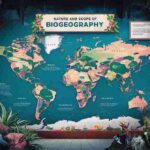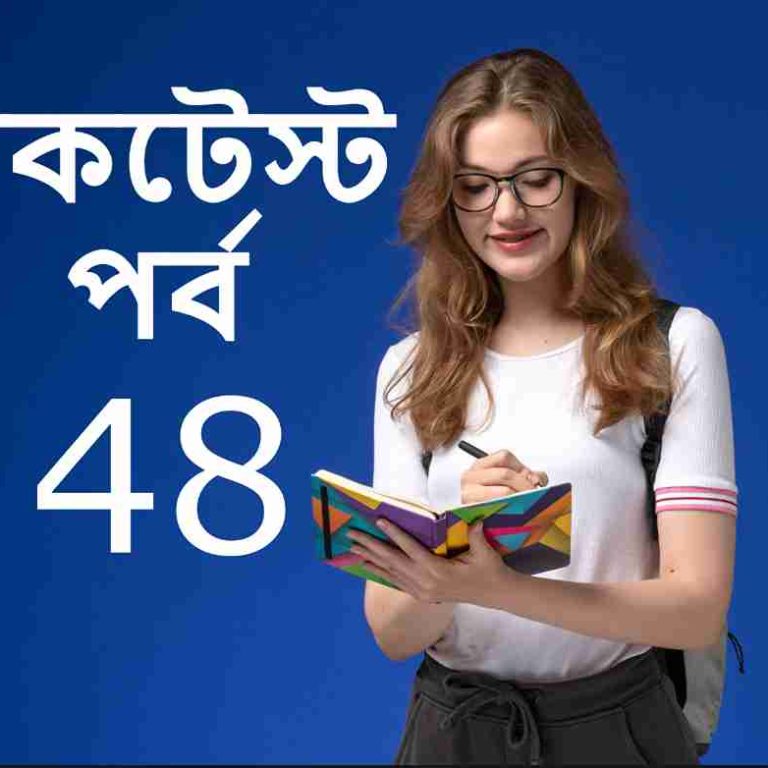General Knowledge of India: A Comprehensive Overview Part 2
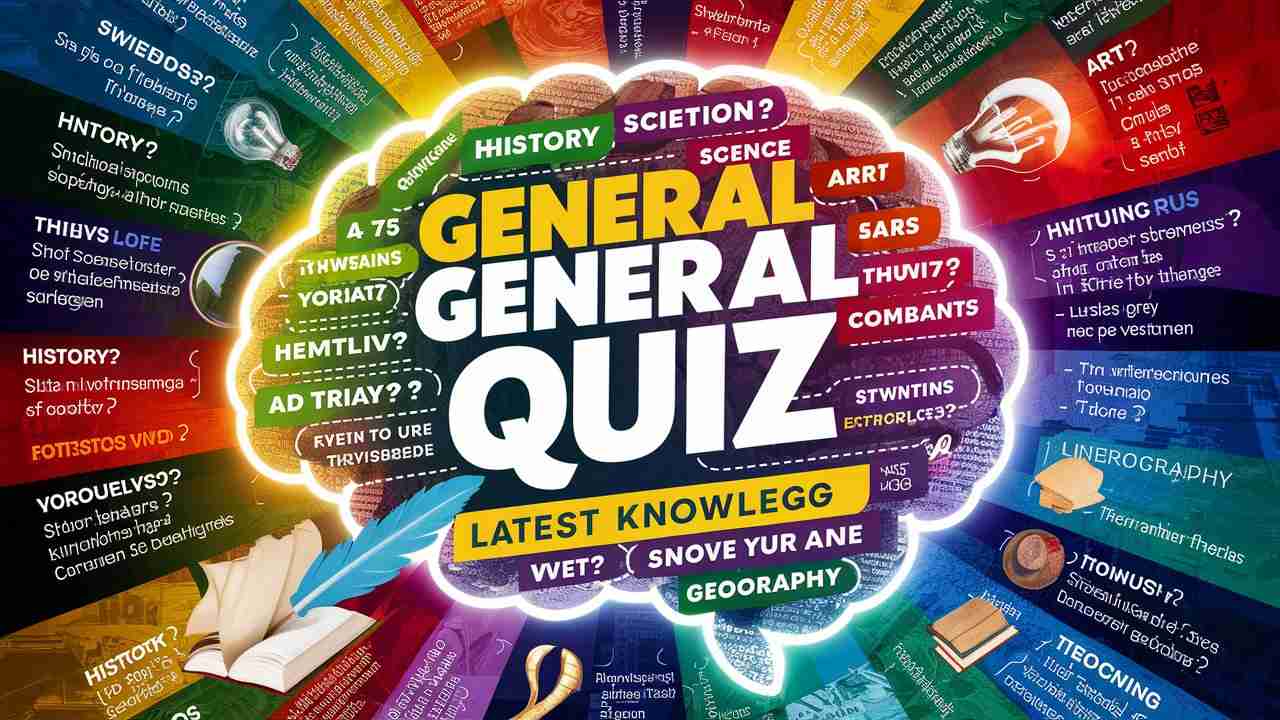
General Knowledge Quize
50 General Knowledge of India: A Comprehensive Overview Part 2
India, a country with a rich history and diverse culture, is a land of fascinating contrasts and remarkable achievements. From its vibrant traditions to its technological advancements, India has left an indelible mark on the global stage. This comprehensive general knowledge quiz on India covers various aspects, including history, geography, politics, science, culture, and more, designed to test your understanding of this incredible nation.
Historical Significance
India’s history is an intricate tapestry of ancient civilizations, empires, and freedom struggles. Figures like Mahatma Gandhi, Jawaharlal Nehru, and Sardar Vallabhbhai Patel are renowned for their pivotal roles in India’s fight for independence. Additionally, the Mughal Empire, the British Raj, and the adoption of the Constitution in 1950 all shaped India into the democratic republic it is today.
Geography and Natural Wonders
India’s geography is as diverse as its people. The country is home to a vast range of physical features, from the towering Himalayas in the north to the expansive Thar Desert in the west. It is crisscrossed by major rivers like the Ganga, Brahmaputra, and Godavari, which sustain millions of lives. The quiz also highlights India’s rich biodiversity, including the Bengal Tiger, the national animal, and the magnificent Peacock, the national bird.
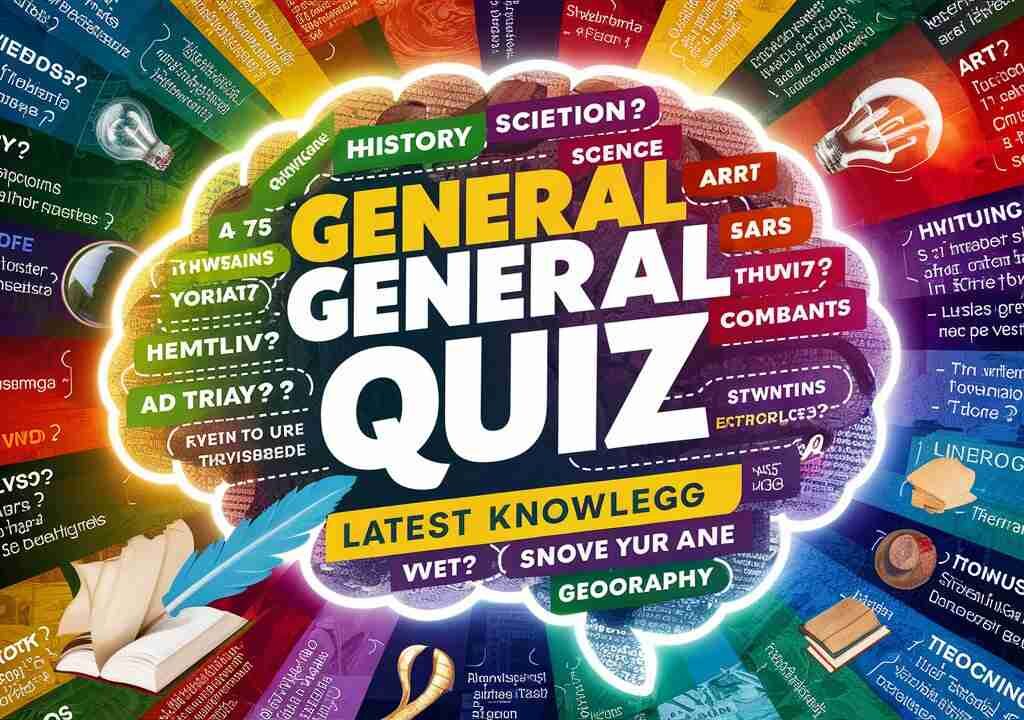
Cultural Heritage
India’s cultural landscape is unique, enriched by classical dance forms such as Bharatanatyam, Kathak, and Odissi, as well as various festivals, languages, and traditions. The quiz includes questions on key cultural symbols, such as the Lotus (national flower) and the Banyan Tree (national tree), which have deep spiritual and historical significance. India’s art and literature, notably represented by Nobel laureate Rabindranath Tagore, further contribute to its cultural wealth.
Scientific Achievements and Global Influence
India has made remarkable strides in science and technology, launching satellites like Aryabhata and achieving milestones in space exploration with missions such as Chandrayaan and Mangalyaan. The country has also developed nuclear power and maintains one of the largest armies in the world. The quiz touches upon these achievements while acknowledging India’s contributions to global peace and innovation.
Politics and Governance
India’s political framework, based on its Constitution, is the largest democracy in the world. Key political leaders, such as Indira Gandhi, India’s first woman Prime Minister, and influential presidents like Dr. A. P. J. Abdul Kalam, have shaped the nation’s governance. The country’s electoral process and structure of government serve as a model for many other nations.
Sports and Global Recognition
India has a rich history in sports, from ancient traditional games to modern achievements in cricket, hockey, and weightlifting. The quiz celebrates athletes like Karnam Malleswari, the first Indian woman to win an Olympic medal, and India’s numerous accolades in field hockey, which is considered the national sport.
1. Who is the current President of India (as of 2024)?
- a) Ram Nath Kovind
- b) Pratibha Patil
- c) Droupadi Murmu
- d) A. P. J. Abdul Kalam
Answer: c) Droupadi Murmu
Explanation: Droupadi Murmu is the 15th President of India, serving since July 25, 2022. She is the first tribal woman to hold the office.
2. Which Indian state has the highest population?
- a) Maharashtra
- b) Bihar
- c) Uttar Pradesh
- d) West Bengal
Answer: c) Uttar Pradesh
Explanation: Uttar Pradesh is the most populous state in India, with a population exceeding 200 million.
3. What is the national motto of India?
- a) Satyameva Jayate
- b) Jai Hind
- c) Vande Mataram
- d) Bharat Mata ki Jai
Answer: a) Satyameva Jayate
Explanation: “Satyameva Jayate” means “Truth Alone Triumphs” and is taken from the ancient Indian scripture Mundaka Upanishad. It is inscribed on the Indian national emblem.
4. What is the capital of Tamil Nadu?
- a) Chennai
- b) Madurai
- c) Coimbatore
- d) Tiruchirappalli
Answer: a) Chennai
Explanation: Chennai, formerly known as Madras, is the capital of Tamil Nadu and one of the largest cities in South India.
5. Which Indian state is known for the highest literacy rate among women?
- a) Kerala
- b) Himachal Pradesh
- c) Tamil Nadu
- d) Punjab
Answer: a) Kerala
Explanation: Kerala has the highest literacy rate in India, and it also has the highest literacy rate among women, significantly contributing to the state’s overall literacy.
6. In which year did India host the Commonwealth Games?
- a) 1998
- b) 2002
- c) 2010
- d) 2014
Answer: c) 2010
Explanation: India hosted the Commonwealth Games in New Delhi in 2010, marking the first time the event was held in India.
7. Which Indian city is known as the “City of Pearls”?
- a) Jaipur
- b) Hyderabad
- c) Surat
- d) Cochin
Answer: b) Hyderabad
Explanation: Hyderabad is known as the “City of Pearls” due to its historical pearl and diamond trading centers.
8. Who was the first Indian woman to become a full-time pilot?
- a) Kalpana Chawla
- b) Sarla Thakral
- c) Sunita Williams
- d) Bhawana Kanth
Answer: b) Sarla Thakral
Explanation: In 1936, Sarla Thakral became the first Indian woman to fly an aircraft at the age of 21.
9. Which state is known as the “Land of Five Rivers”?
- a) Haryana
- b) Punjab
- c) Rajasthan
- d) Himachal Pradesh
Answer: b) Punjab
Explanation: Punjab is known as the “Land of Five Rivers” because of the five major rivers that flow through the region: Beas, Chenab, Jhelum, Ravi, and Sutlej.
10. Which Indian Prime Minister initiated the “Green Revolution”?
- a) Indira Gandhi
- b) Jawaharlal Nehru
- c) Lal Bahadur Shastri
- d) Manmohan Singh
Answer: a) Indira Gandhi
Explanation: The Green Revolution in India was initiated during Indira Gandhi’s tenure in the late 1960s and early 1970s to improve agricultural productivity.
11. What is the official language of Nagaland?
- a) Assamese
- b) Hindi
- c) English
- d) Naga
Answer: c) English
Explanation: English is the official language of Nagaland, a northeastern state of India with diverse tribal languages.
12. Who was the first Indian astronaut to go to space?
- a) Sunita Williams
- b) Rakesh Sharma
- c) Kalpana Chawla
- d) Ravish Malhotra
Answer: b) Rakesh Sharma
Explanation: Rakesh Sharma was the first Indian astronaut to go to space aboard the Soviet spacecraft Soyuz T-11 in 1984.
13. Which river flows through the state of Goa?
- a) Ganga
- b) Yamuna
- c) Mandovi
- d) Brahmaputra
Answer: c) Mandovi
Explanation: The Mandovi River, also known as Mahadayi, is one of the major rivers that flows through Goa and is crucial for the state’s water supply.
14. Who is the composer of India’s national song “Vande Mataram”?
- a) Rabindranath Tagore
- b) Bankim Chandra Chatterjee
- c) Swami Vivekananda
- d) Sarojini Naidu
Answer: b) Bankim Chandra Chatterjee
Explanation: “Vande Mataram,” India’s national song, was composed by Bankim Chandra Chatterjee and was part of his novel Anandamath.
15. Which Indian city is known as the “Textile City”?
- a) Ahmedabad
- b) Mumbai
- c) Surat
- d) Coimbatore
Answer: c) Surat
Explanation: Surat is known as the “Textile City of India” due to its extensive textile and garment production.
16. Which Indian mountain peak is the highest?
- a) Mount Everest
- b) Kanchenjunga
- c) Nanda Devi
- d) Mount Abu
Answer: b) Kanchenjunga
Explanation: Kanchenjunga is the highest mountain peak in India, though Mount Everest is the highest peak in the world and is located in Nepal.
17. Which Indian state is famous for the Sunderbans Mangrove Forest?
- a) Odisha
- b) West Bengal
- c) Tamil Nadu
- d) Karnataka
Answer: b) West Bengal
Explanation: The Sunderbans, a UNESCO World Heritage Site, is a large mangrove forest in West Bengal, famous for its Royal Bengal Tigers.
18. Who is regarded as the founder of Sikhism?
- a) Guru Arjan Dev
- b) Guru Gobind Singh
- c) Guru Nanak
- d) Guru Tegh Bahadur
Answer: c) Guru Nanak
Explanation: Guru Nanak is the founder of Sikhism, and his teachings laid the foundation of the religion in the late 15th century.
19. Which is the longest dam in India?
- a) Bhakra Dam
- b) Hirakud Dam
- c) Tehri Dam
- d) Nagarjuna Sagar Dam
Answer: b) Hirakud Dam
Explanation: Hirakud Dam, built on the Mahanadi River in Odisha, is the longest dam in India, with a total length of 25.8 km.
20. Who is known as the “Missile Man of India”?
- a) Homi Bhabha
- b) Vikram Sarabhai
- c) A. P. J. Abdul Kalam
- d) C. V. Raman
Answer: c) A. P. J. Abdul Kalam
Explanation: Dr. A. P. J. Abdul Kalam is known as the “Missile Man of India” for his contributions to the development of ballistic missiles and space technology.
21. Which Indian city is famous for its IT industry and is called the “Tech Hub” of India?
- a) Bengaluru
- b) Hyderabad
- c) Pune
- d) Chennai
Answer: a) Bengaluru
Explanation: Bengaluru is often referred to as the “Tech Hub” or “Silicon Valley of India” due to its thriving information technology sector.
22. Who among the following is the first Indian to win an Oscar?
- a) Satyajit Ray
- b) Bhanu Athaiya
- c) A. R. Rahman
- d) Resul Pookutty
Answer: b) Bhanu Athaiya
Explanation: Bhanu Athaiya became the first Indian to win an Oscar in 1983 for Best Costume Design in the film Gandhi.
23. Which Indian city is home to the famous “Charminar”?
- a) Delhi
- b) Mumbai
- c) Hyderabad
- d) Jaipur
Answer: c) Hyderabad
Explanation: The Charminar is an iconic structure located in Hyderabad, built by Muhammad Quli Qutb Shah in 1591.
24. Which is the largest freshwater lake in India?
- a) Dal Lake
- b) Loktak Lake
- c) Wular Lake
- d) Chilika Lake
Answer: c) Wular Lake
Explanation: Wular Lake, located in Jammu and Kashmir, is the largest freshwater lake in India.
25. Which Indian festival is known as the “Festival of Colors”?
- a) Diwali
- b) Holi
- c) Eid
- d) Pongal
Answer: b) Holi
Explanation: Holi, the “Festival of Colors,” is celebrated across India, symbolizing the victory of good over evil and the arrival of spring.
26. Which state in India is the leading producer of rice?
- a) Punjab
- b) West Bengal
- c) Uttar Pradesh
- d) Tamil Nadu
Answer: b) West Bengal
Explanation: West Bengal is the largest producer of rice in India, followed by Uttar Pradesh and Punjab.
27. What is the main industry of the state of Assam?
- a) Textile
- b) Tourism
- c) Tea
- d) Information Technology
Answer: c) Tea
Explanation: Assam is renowned for its tea industry, and the state produces some of the finest tea in the world.
28. Which of the following is the national aquatic animal of India?
- a) River Dolphin
- b) Dugong
- c) Whale Shark
- d) Crocodile
Answer: a) River Dolphin
Explanation: The Ganges River Dolphin is the national aquatic animal of India, found primarily in the Ganges and Brahmaputra rivers.
29. Which Indian leader gave the slogan “Inquilab Zindabad”?
- a) Mahatma Gandhi
- b) Bhagat Singh
- c) Subhas Chandra Bose
- d) Jawaharlal Nehru
Answer: b) Bhagat Singh
Explanation: Bhagat Singh, a revolutionary freedom fighter, popularized the slogan “Inquilab Zindabad,” meaning “Long Live the Revolution.”
30. Which Indian classical dance form originated in Tamil Nadu?
- a) Kathak
- b) Odissi
- c) Bharatanatyam
- d) Kuchipudi
Answer: c) Bharatanatyam
Explanation: Bharatanatyam is one of the oldest classical dance forms of India and originated in Tamil Nadu.
31. Which state in India is the largest producer of coffee?
- a) Tamil Nadu
- b) Kerala
- c) Karnataka
- d) Andhra Pradesh
Answer: c) Karnataka
Explanation: Karnataka is the largest producer of coffee in India, accounting for over 70% of the country’s total coffee production.
32. Which famous Indian leader is known as the “Netaji”?
- a) Bhagat Singh
- b) Jawaharlal Nehru
- c) Subhas Chandra Bose
- d) Vallabhbhai Patel
Answer: c) Subhas Chandra Bose
Explanation: Subhas Chandra Bose, a prominent figure in India’s freedom struggle, is popularly known as “Netaji” for his leadership of the Indian National Army.
33. What is the name of the India’s first artificial satellite?
- a) Aryabhata
- b) INSAT-1A
- c) Bhaskara
- d) Rohini
Answer: a) Aryabhata
Explanation: Aryabhata was India’s first artificial satellite, launched on April 19, 1975, marking India’s entry into space exploration.
34. Which Indian river is called the “Sorrow of Bihar”?
- a) Ganga
- b) Yamuna
- c) Kosi
- d) Brahmaputra
Answer: c) Kosi
Explanation: The Kosi River is known as the “Sorrow of Bihar” because of its frequent and devastating floods that affect the region.
35. Who was the first recipient of the Bharat Ratna award?
- a) Dr. Sarvepalli Radhakrishnan
- b) C. Rajagopalachari
- c) C. V. Raman
- d) Jawaharlal Nehru
Answer: b) C. Rajagopalachari
Explanation: C. Rajagopalachari, Dr. Sarvepalli Radhakrishnan, and Dr. C. V. Raman were the first recipients of the Bharat Ratna in 1954.
36. What is the main occupation of the people in the Sundarbans region?
- a) Fishing
- b) Agriculture
- c) Timber
- d) Tourism
Answer: a) Fishing
Explanation: The people of the Sundarbans, a UNESCO World Heritage Site in West Bengal, primarily engage in fishing and honey collection as their main occupations.
37. Which Indian state has the largest forest cover?
- a) Arunachal Pradesh
- b) Madhya Pradesh
- c) Chhattisgarh
- d) Kerala
Answer: b) Madhya Pradesh
Explanation: Madhya Pradesh has the largest forest cover in India, covering around 77,482 square kilometers of its total land area.
38. Which is the longest river bridge in India?
- a) Bandra-Worli Sea Link
- b) Howrah Bridge
- c) Mahatma Gandhi Setu
- d) Bhupen Hazarika Setu
Answer: d) Bhupen Hazarika Setu
Explanation: The Bhupen Hazarika Setu (also known as Dhola–Sadiya Bridge) in Assam is the longest river bridge in India, stretching 9.15 kilometers over the Brahmaputra River.
39. Who was the first Indian woman to win a gold medal at the Commonwealth Games?
- a) P. V. Sindhu
- b) Saina Nehwal
- c) Mary Kom
- d) Karnam Malleswari
Answer: d) Karnam Malleswari
Explanation: Karnam Malleswari was the first Indian woman to win a gold medal at the Commonwealth Games in weightlifting in 1994.
40. Which state is known as the “Fruit Bowl of India”?
- a) Maharashtra
- b) Himachal Pradesh
- c) Uttar Pradesh
- d) Jammu & Kashmir
Answer: b) Himachal Pradesh
Explanation: Himachal Pradesh is known as the “Fruit Bowl of India” due to its wide variety of fruits like apples, peaches, and apricots.
41. Which festival marks the New Year in the Sikh calendar?
- a) Vaisakhi
- b) Diwali
- c) Holi
- d) Lohri
Answer: a) Vaisakhi
Explanation: Vaisakhi, celebrated on April 13 or 14, marks the Sikh New Year and is also a major harvest festival in Punjab.
42. Which state in India is the largest producer of spices?
- a) Tamil Nadu
- b) Karnataka
- c) Kerala
- d) Andhra Pradesh
Answer: c) Kerala
Explanation: Kerala is the largest producer of spices in India, known for black pepper, cardamom, cloves, and cinnamon.
43. Who is considered the “Father of the Indian Constitution”?
- a) Jawaharlal Nehru
- b) Mahatma Gandhi
- c) B. R. Ambedkar
- d) Sardar Vallabhbhai Patel
Answer: c) B. R. Ambedkar
Explanation: Dr. B. R. Ambedkar is regarded as the “Father of the Indian Constitution” for his key role in drafting the Indian Constitution.
44. Which Indian state is famous for Kathakali dance?
- a) Karnataka
- b) Kerala
- c) Tamil Nadu
- d) Andhra Pradesh
Answer: b) Kerala
Explanation: Kathakali, a classical Indian dance form known for its elaborate costumes and dramatic performances, originated in Kerala.
45. Which city is known as the “Manchester of South India”?
- a) Chennai
- b) Madurai
- c) Coimbatore
- d) Trichy
Answer: c) Coimbatore
Explanation: Coimbatore is known as the “Manchester of South India” due to its textile industry and numerous cotton mills.
46. What is the name of India’s first nuclear power plant?
- a) Kaiga
- b) Tarapur
- c) Narora
- d) Kudankulam
Answer: b) Tarapur
Explanation: Tarapur Atomic Power Station, located in Maharashtra, was the first nuclear power plant in India, established in 1969.
47. Which Indian leader is referred to as “The Nightingale of India”?
- a) Indira Gandhi
- b) Sarojini Naidu
- c) Vijaya Lakshmi Pandit
- d) Savitribai Phule
Answer: b) Sarojini Naidu
Explanation: Sarojini Naidu, a freedom fighter and poet, is known as “The Nightingale of India” for her literary contributions and eloquence.
48. Which Indian city is known as the “Gateway of India”?
- a) Kolkata
- b) Mumbai
- c) Chennai
- d) Kochi
Answer: b) Mumbai
Explanation: Mumbai is referred to as the “Gateway of India,” and the iconic Gateway of India monument was built to commemorate the visit of King George V in 1911.
49. Which Indian festival celebrates the bond between brothers and sisters?
- a) Diwali
- b) Raksha Bandhan
- c) Navratri
- d) Pongal
Answer: b) Raksha Bandhan
Explanation: Raksha Bandhan is a Hindu festival that celebrates the love and duty between brothers and sisters, symbolized by the tying of a protective thread.
50. What is the state animal of Rajasthan?
- a) Tiger
- b) Camel
- c) Elephant
- d) Leopard
Answer: b) Camel
Explanation: The camel is the state animal of Rajasthan, reflecting the importance of camels in the desert ecosystem and their role in transportation in the region.
50 General Knowledge of India: A Comprehensive Overview PART 1
About the Author
Sisir Mondal
Administrator
My name is SISIR MONDAL, I complete my graduate from University of Kalyani , West Bengal, India . I am like to build WordPress website and also developing this type of website . If you want your website , you can contact me trough email. thanks to visit this site.
